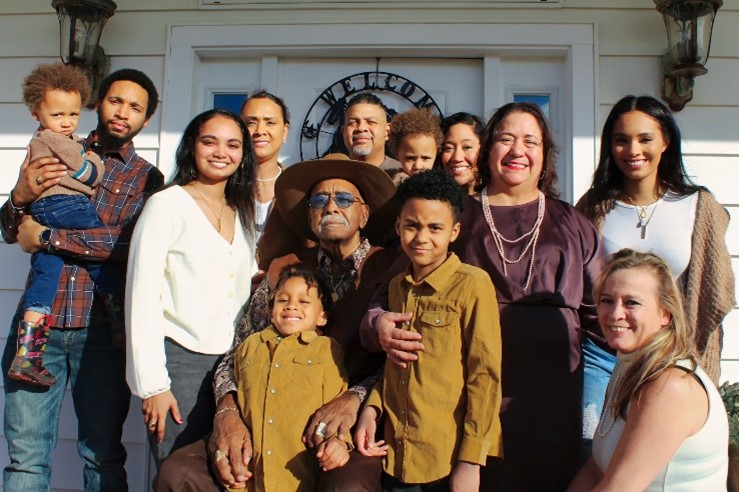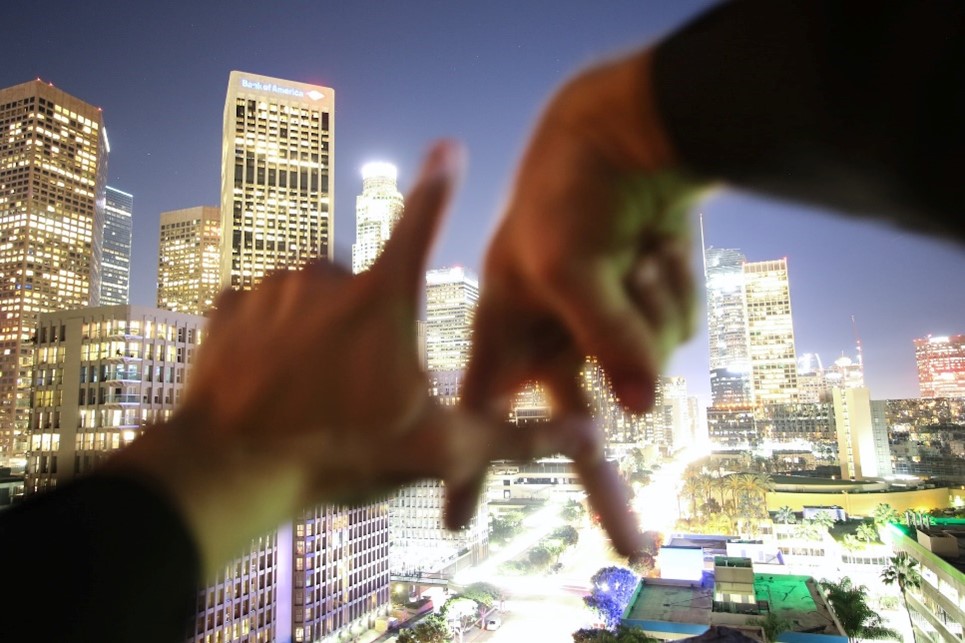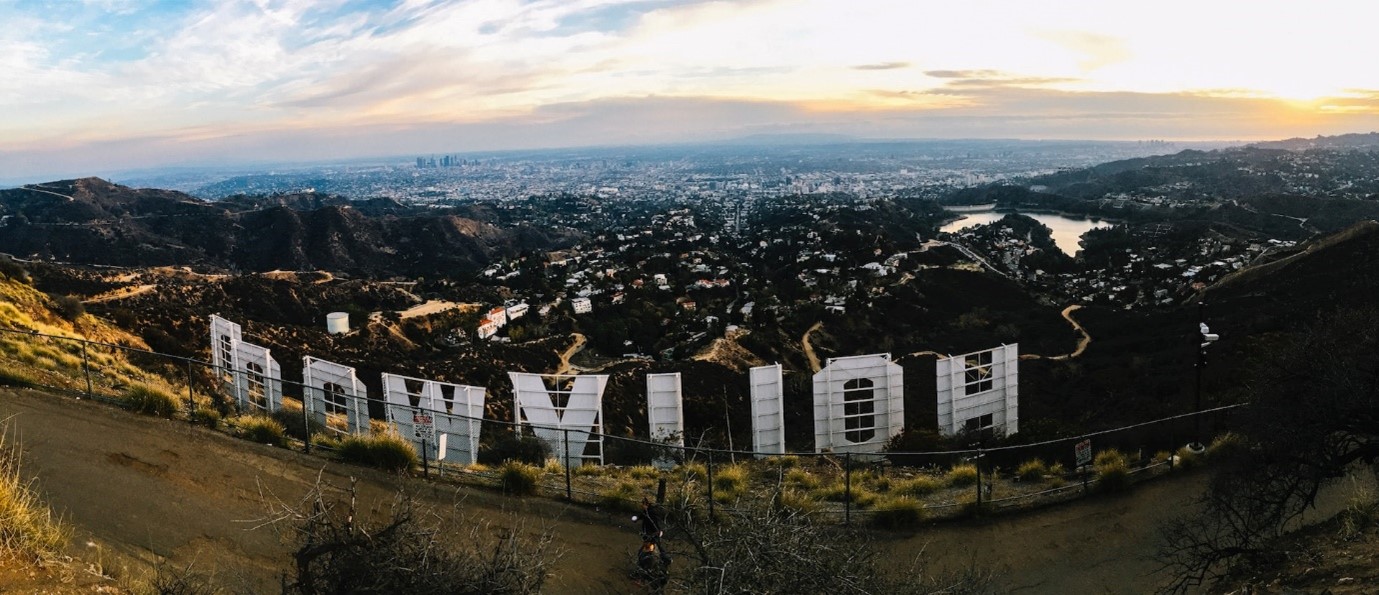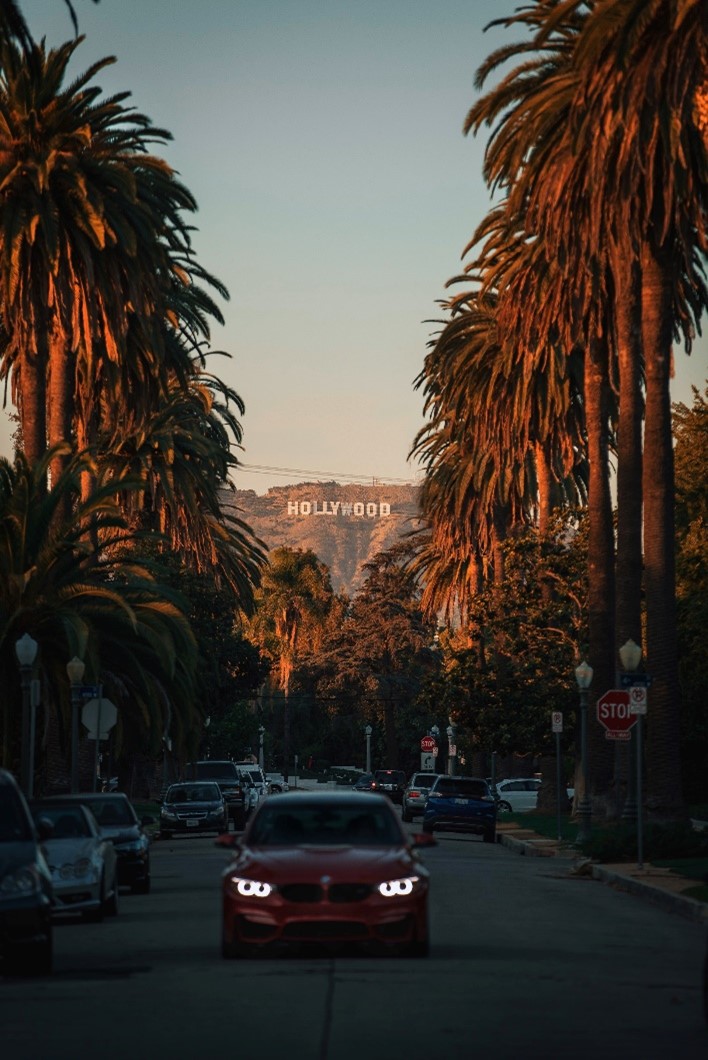Los Angeles – A Local's Guide to L.A.
Los Angeles: a home for dreamers, a place for creative expression, and a city of limitless possibilities. It only makes sense that so many people want to move here and stay - for good. Moving to L.A. can be exciting or daunting, or both at the same time, but chance favors the prepared mind! We’ve collected some of the most useful insights about the city to help you navigate your first few weeks in Los Angeles.

Want to pass for a local? Keep this guide to hand, and you’ll blend in in no-time.
TABLE OF CONTENTS
How to move to Los Angeles
The United States is a large country, full of contradictions. Although some areas of the States might not welcome expats, L.A. is one of the most welcoming cities in the US and is – by far – one of the biggest melting pots in the world. There are plenty of job opportunities in both the tech and entertainment industry, although there is no shortage of competition either.
The safest way to move to Los Angeles is by having a job in the city already, to avoid any work permit issues. However, finding a job once you’re there is not impossible, we simply recommend that you save up some money before moving. There certainly are ways to live in Los Angeles on a budget, but it’s likely that in the beginning it won’t be easy. L.A. is, on average, an expensive city, one of the most expensive – to be precise – both in the US and in the world. In fact, if you’re relocating for a job, you should consider the steep living expenses when negotiating your new salary.
Finally, you should move to Los Angeles with a dream and a desire to live according to your truest self. L.A. is a refuge for many people from the LGBTQIA+ community, free-thinkers, famous wannabes, young entrepreneurs, and people in search of a freer environment in which to express their unorthodox religious and spiritual views.

Photo by Jack Finnigan on Unsplash. Free to use
Work permit and green cards in Los Angeles
The biggest obstacle expats will face when trying to move to Los Angeles is securing a work permit. This is why many people only move to L.A. when they already have a job. Two of the most commonly used options to earn a green card are:
- Sponsorship through your employer
- Sponsorship through a family member
Unfortunately, companies in the US have to pay extra to sponsor foreigners’ work visas, so it’s your job to prove to a potential employer that you’re a much better resource than any other American worker. Let’s face it, it won’t be a walk in the park.
A green card allows an expat to live and work in the United States permanently. Immigration law in the States is complex and the process of obtaining a permanent resident status through a green card isn’t an easy one – and it’s only worth when you’re planning to stay for good. But if you’ve been living in Los Angeles for a while and are planning to stay, we recommend checking if you’re eligible for a green card.
Choosing to live in Los Angeles: Pros and Cons

Relocating to a new city is a challenging experience for everyone. Especially if you’re moving to a metropolis such as Los Angeles. However, moving to L.A. has many perks that will make you forget the stress of the initial hustle. For one, whatever lifestyle you are used to or are looking for, you’ll find it here. The city is one of the most diverse in the whole United States. For an expat, it’ll be very easy to find a “piece of home” in Los Angeles.
It’s more than likely that while walking through the streets of L.A. you’ll hear multiple languages being spoken daily. In fact, the biggest community in Los Angeles is made up of Hispanic (or Latino) residents, yet you’ll find also communities of Asian heritage – especially if you take a stroll through Chinatown, Little Armenia, and Little Tokyo.
Some other perks of moving to Los Angeles are obvious: the Mediterranean climate, the buzzing nightlife and the entertainment industry that constantly pushes the city to the forefront of the showbiz. You should, however, be prepared to face some challenges:
- The city is expensive: From transportation to housing costs, living in Los Angeles on a low budget is hard.
- Commuting can be tedious: The daily traffic jams are infamous in L.A., and a good chunk of your time will be spent in your car, especially because the city is very spread out. Many Angelenos, in fact, remain in their “bubble” of L.A. and effectively “use” only a small portion of the city.
- Earthquakes: Some 10,000 earthquakes occur in L.A. every year, although most of these you won’t even feel.
Where to live: Los Angeles neighborhoods
Whether Los Angeles will only be your home for only a couple of years, or you’re considering relocating for good, community is important. So, the first thing to do once you move to L.A. is to check out each neighborhood and find your new home.
Central L.A.
Stretching from the Hollywood Hills to Downtown L.A., a whopping 26 neighborhoods comprise what’s commonly referred to as 'Central L.A.'. Here you’ll find the best shopping spots and tourist attractions in the city, including the Beverly Center and La Brea Tar Pits.
In Central L.A. you’ll recognize most of the neighborhood’s names, as the district stretches from the Hollywood Hills to Griffith Park, and down south to Silver Lake and Chinatown. It’s a very diverse area, where the buzzing streets of Western Avenue give way to a more residential, small-town flair area like Larchmont. Most neighborhoods in Central L.A. are prohibitively expensive.
Downtown L.A.
If you’re looking for big city vibes, Downtown L.A. with its giant skyscrapers and office buildings is the district for you. This is yet again, another district full of world-famous attractions: Walt Disney Concert Hall and Crypto.com arena, just to name a couple. Here is also where you’ll find Little Tokyo, a haven of Japanese culture: shops, restaurants, and even a Buddhist temple to reconnect with your roots or explore a new world.

Photo by Jeremy Bishop on Unsplash. Free to use
Local's tip: Despite the many resources currently being invested in improving the living standards of Downtown L.A., it’s not the safest area in Los Angeles.
West Hollywood
A hub of famous events and bewildering nightlife, WeHo offers a strong sense of community for LGBTQIA+ people. You’ll often find pride flags flying along Santa Monica Boulevard, as the neighborhood is a vital part of L.A.’s gay culture.
The district is full of walkable streets and finding a place to rent isn’t as difficult as in other areas of L.A., however the property market is very competitive. High-end boutiques and shopping spots give way to cheaper options if you head east, toward Hollywood.

Photo by Rochelle Brown on Unsplash. Free to use
South Bay
Despite the longer commute to Central L.A. (roughly 45 min), South Bay is a coveted district for many Angelenos. In fact, if you live in South Bay, you’re close to some of the best beaches in Los Angeles. You know that famous L.A. image of a relaxed beach town that turns into a buzzing metropolis? This is exactly where it comes from.
Moreover, this is one of the best districts in terms of low crime rates and high-ranking schools. Unfortunately, this also means that the prices of the housing market are on the higher end.
Venice Beach
Another ‘beach city’ of L.A., the bohemian area of Venice Beach is an enchanting canal district. Along the world-famous Venice Beach boardwalk, you’ll find many restaurants and shops that specialize in unique and sustainable menus. For some of the best tacos of Los Angeles – which is like saying some of the best tacos in the world – La Isla Bonita, a food truck permanently stationed at Rose Ave and 4th Ave, is your best bet.

Photo by Lukas Geck on Unsplash. Free to use
San Fernando Valley
Ideal for families, the suburban area of San Fernando Valley, commonly referred to as ‘the valley’, is full of hiking trails and many first-class restaurants such as Ludo Lefevre’s Petit Trois in Sherman Oaks. Despite the long commute to Central L.A., the valley is a more affordable district for families and it generally offers higher living standards. Filming crews can often be spotted onsite, capturing its picture-perfect beauty.

Photo by Caleb George on Unsplash. Free to use
The Verdugos
Ever heard of Pasadena? The set of The Big Bang Theory? Well, this is its district. If you’re a fan of old western movies, this is your neighborhood as Pasadena’s history is everywhere – from the wilderness of the Verdugo Mountains to the brick facades of restaurants and boutiques.
On the other hand, Orange Grove Boulevard has become a residential area for the rich and famous since the early 20th century. That is due to the many mansions in the area, the legacy of some of the most sought-after American architects who lived here in the past.
Honorable mentions also go to:
- The Westside: An area popular mainly among the wealthy, considered one of LA’s most sought-after neighborhoods, alongside Beverly Hills and Santa Monica. Here you’ll find UCLA, Bel-Air, and the Getty Center.
- Santa Monica: One of Southern California’s finest coastal communities, with expansive public amenities but also breathtaking surfing spots. It hosts some of the more touristy beaches.
- Culver City: An up-and-coming and relatively pleasant neighborhood, especially for those working in creative and tech fields, as it is also home to Sony Pictures.
Working in Los Angeles: How to get started
One of the first things to know about L.A.’s job market is that competition is everywhere. Thanks to its reputation, especially in the entertainment industry, the job market in Los Angeles is highly competitive and fast-paced. Just thinking about the city calls to mind a certain frenziness. However, the job search in Los Angeles is tough, but not impossible.
What to put on a CV

First things first: update your CV. If you’re an expat moving to the US for the first time, you’ll do well to check what’s common and what’s not when applying for jobs in the States. For example, unless you’re applying for a job in the entertainment industry, leave your headshot out of your resume.
Ditch the office
Office hours and office attire are yesterday’s news. You’ll find that most people prefer working from a bar or café dressed as casually as any other customer than putting on a suit or going to the office. Yes, you read that right: bar or café. In Los Angeles, many employees don’t work in traditional 9-5 jobs, and they often don’t work in an office at all.
Startups and common career paths
Los Angeles is famous for its startup scene: Netflix and SpaceX are only a couple of names that might come to mind. The majority of these startups are based in Santa Monica or Venice Beach. Generally speaking, you won’t have any problem looking for a job in Los Angeles if your career is in any of the following fields: Aerospace and Defense, Information Technology, Environmental Technology, Trade and Logistics, or Healthcare.

Photo by Marvin Meyer on Unsplash. Free to use
Arriving in and getting around Los Angeles
Los Angeles has three major airports: (LAX), Ontario International Airport (ONT) and Hollywood Burbank Airport, initially Bob Hope Airport (BUR). For most expats, LAX is the most obvious choice for paying visit home every once in a while, as it’s the 6th business air terminal in the world and the third in the States, it is by far the best internationally connected airport in L.A. Moreover, LAX is located in Santa Monica and it’s therefore the shortest distance of any airport from the city center in Los Angeles (only 20 km).

ONT, in the east of Los Angeles, is the second most used airport in the city. It’s the way to go if you’re planning to leave Southern California and visit the Inland Empire. BUR is located roughly 5 km northwest of downtown Burbank, it mostly serves the area of Glendale, Pasadena, and the San Fernando Valley. As BUR is closer to the Griffith Park and Hollywood than LAX, it might also come in handy, especially if you’re planning to fly west within the US.
Other airports in Los Angeles are:
- John Wayne Airport
- Long Beach Airport
- San Bernardino International Airport
Public transport in L.A.
The public transport is affordable and convenient, as it covers most of Los Angeles County. The L.A. public transport system consists of the Metro Buses, DASH Buses, and Metro Rail Trains.
The bus system offers 200 different bus lines and there are three types of bus services:
- Metro Local Buses (orange), covering major districts and tourist attractions,
- Metro Rapid Buses (red), with more express rides as the buses have special sensors that ensure green lights throughout their journey and avoid traffic jams,
- Metro Express Buses (blue), connecting Downtown L.A. with other business areas of the city, it is the most used bus service in Los Angeles.
As it’s no secret that traffic is a big problem in Los Angeles, the city offers also 33 different routes serviced by small shuttle buses, called DASH Buses, and there’s even a railway system in Los Angeles which consists of two subway lines and four light-rail lines.
If you’ve been to Los Angeles before, you must have seen the TAP machines on each bus and/or in each subway station. To take L.A. public transport, you’ll need to get yourself a TAP Card, usable on all rides, that you can regularly top up with the whatever amount of money you need and avoid hunting for coins every time you board a new vehicle.
Taxi or car-sharing
It doesn’t take much to realize that the main means of transportation in Los Angeles is the car. If you’re not ready to get your own, taxis in Los Angeles are the next best thing. Taxi services usually charge by the mile. Alternatively, we recommend downloading some popular ride-sharing apps like Uber or Lyft. However, beware of traffic! During rush hour, make sure you give yourself extra travel time to get around the city.

Buying your own car (recommended)
Once you’ve settled in your new home in L.A., it’s a good idea to get yourself a car. It’s actually not at all expensive to own a car in Los Angeles, as the city has a system of toll-free freeways that connect many different districts, even in the suburbs. At the same time, you’ve got to have some patience, as traffic during rush hour (7-9 am and 3-7 pm) can make the roads pretty jammed. We also recommend investing in a GPS, as learning how to navigate the spread-out districts of L.A. can take some time.
Cycling in L.A.
With year-round perfect weather (unsurprisingly) you might want to brush up your cycling skills and commute to work on a bike. Especially given its relatively flat geography, Los Angeles could sound like a cyclists' heaven. However, the city is unfortunately infamous for being a very dangerous place to bike. Infrastructure for cyclists hasn’t been a priority until very recently, but while car culture is very predominant in the city, things are changing. Investments to add bike lanes and improve the existing ones are in high-demand, and many see it as part of the solution to the traffic problem in L.A.
Beware that biking on sidewalks is illegal in some cities across Los Angeles County, like Santa Monica and Manhattan Beach, whereas it's legal in L.A. central city.
What all locals know about L.A.

L.A. residents come from over 140 countries and speak a whopping 224 different languages. But how did we get here? The city was officially founded on September 4th, 1781, when 44 settlers decided to call what is now Downtown L.A. their new home. These settlers came from Sonora and Sinaloa (Mexico), two of them were Spaniards, while the others were Native Americans, Blacks of African descent and Mestizos of mixed ancestry. The diversity of the city was a defining trait from the very beginning.
This initial settlement only became a city in 1835, when Spain passed the territory to Mexico. Finally, Los Angeles only became part of the US in January 1847. However, the story of the city is still alive in its name, which comes from the name the original settlers had chosen: El Pueblo de Nuestra Senora la Reina de Los Angeles, or The Town of Our Lady the Queen of the Angels.
Intrigued? Want to know other fun facts about Los Angeles? We’ve got you covered.
Fun facts about Los Angeles
Los Angeles is one of the world’s most famous cities. The city is internationally known for being the home of the rich and famous, but there’s more to this Southern Californian heaven than meets the eye. Here are some fun facts about the city that will make you shine with knowledge at dinner with your new Angelenos friends.
Hollywoodland
The district of Hollywood was originally developed as a real estate project, and those developers put up the now world-famous Hollywood sign. The original plan was for it to read “Hollywoodland” and it was supposed to become the new home of a segregated community.
Ice ice, baby
The ice age excavation site with the biggest and most diverse collection of ice age fossils in the world is... where? You guessed it, in L.A. For any fossil lover, La Brea Tar Pits is must-see. The site has unearthed more than 3.5 million fossils and new ones are still being found today.

Photo by Craig Melville on Unsplash. Free to use
How Mexican is California?
A large number of Hispanic and Latino residents has shaped California into what we know today. In fact, it’s no secret that California has the highest number of Latinos in the US. But did you know that before becoming part of the United States, California was actually part of Mexico? That may be why Los Angeles has the best Mexican food you can get outside of Mexico.
Surfing culture
Surf culture makes up a huge part of Southern California's identity and L.A. is no exception. In fact, it is precisely here that surf culture spread through the rest of the States in the 60’s - but how did this come to be? It is popular belief that the Polynesians are responsible for the origins of the sport, specifically the Polynesians who settled in Hawaii and brought surfing with them. However, colonialism relegated native Hawaiian culture, including surfing, to the margins of American culture.

Photo by Matthew LeJune on Unsplash. Free to use
Surfing really took off as a worldwide sport after Hawaiian surfers started traveling up and down the West Coast in the early 1900s. The art and music around surf culture reflected the equally laid-back and free-spirited hippie culture that was growing in Southern California at the time. So as R&B, rock and pop filled the streets of Los Angeles, Polynesian-inspired tiki culture also influenced clothing and designs throughout the city.
And so, surfing became so popular that Angelenos invented skateboarding, so that they could surf on dry land as well. Want to partake in the fun? Here are some of the best surf spots in Los Angeles:
- El Porto: The quintessential “Southern Californian” beach
- Redondo beach and Hermosa beach: Two coastal communities of surf culture
- Ocean Park: At the end of Main Street in Santa Monica
- Venice Beach: If you’re looking for more mellow waves
- Sunset Point Beach: A great spot for beginners
Los Angeles trivia
- Los Angeles is the second-most densely populated American city, after NYC.
- Record breaker: Los Angeles is visited by around 50 million people per year.
- In Pacific Park, there is the world’s only solar-powered Ferris wheel.
- Los Angeles is the only North American city to have hosted the Olympics twice.
- The Huntington Library has served as the set for almost 30 movies.
- The Griffith Observatory is the most visited observatory in the world.
Instagram hotspots in Los Angeles
If you’ve been living in Los Angeles for a while, your Instagram feed might already be full of pictures of the Hollywood sign, Venice Beach and other landmarks in the city. But don’t despair, those touristy places are too obvious anyway.
Here’s a list of some of the most instagrammable places in the city that will make your friends and followers instantly jealous.
- The Last Bookstore: An indie bookstore that offers the perfect backdrop for your next reading post
- Micheltorena Stairs: At 3400 Sunset Blvd in Los Angeles, this hidden staircase has been turned into a masterpiece by artist Corinne Carrey
- Bradbury Building: A five-story office building, considered by many an architectural landmark in Downtown L.A. due to its breathtaking skylit atrium,
- Urban Lights: At Los Angeles County Museum of Art, a literal forest of city streetlights created by artist Chris Burden
- Venice Canals: This is the most historical part of the district of Venice, and it consists of manmade wetland canals
- The Broad Museum: Home to 2,000 works of art including the Instagram-famous Infinity Mirrored Room
- Stahl House: A house designed by architect Pierre Koenig in the modernist style, located in the Hollywood Hills and made famous by previous owners Buck and Carlotta Stahl
- Noho Station: A staple for fans of metro art, the theme and design of artist James Doolin is a kaleidoscopic dream
- The Pink Wall: is the facade of designer Paul Smith’s flagship store in L.A., and it gets regularly repainted to retain its bubblegum aesthetic
- Bloom: A bouquet blooming in L.A.’s Bloom Square made by street artist Hueman in honor of community advocate Joel Bloom.
Day trips from Los Angeles
California is a top travel destination for expats and Americans alike. But while tourists will remain in Los Angeles, locals and long-time residents have the opportunity to go and explore beyond the borders of the city. Within an hour drive of Los Angeles, you can reach some of the best landscapes Southern California has to offer. How to best enjoy the gorgeous sunny weather of this part of the world, if not by exploring the quintessential SoCal town of Laguna Beach, or the picturesque coastal city of Oxnard?
We have collected a couple of the best ideas for a day trip from Los Angeles, and although some of these destinations might be two to three hours away, they’re definitely worth the drive. Ready? Go!
Santa Catalina Island
Two hours drive
Santa Catalina Island has been a coveted destination for visitors since the early 20s, as it often served as a film set for many old Hollywood movies. The cameras might have rolled back on the island, but its cinematic seaside beauty is still here.

Photo by Luke Bender on Unsplash. Free to use
This romantic island is perfect for a weekend getaway or a honeymoon full of outdoorsy activities: hiking, cycling, sailing… just choose your adventure.
Disneyland
Less than an hour drive
As Disneyland is less than 50km away from Los Angeles, it goes without saying that it’s a must-see for most families with kids. However, the world-famous amusement park offers entertainment for children and adults of all ages. For many Angelenos, it is actually a favorite destination on many weekends and/or family reunions. As the park is quite big we recommend getting here early to catch the best rides. Aside for the obvious attractions, one reason why Disneyland attracts so many adults is its generous offer of restaurants.
Food highlight: the Blue Bayou Restaurant next to the Pirates of the Caribbean ride serves Cajun and Creole cuisine.
Santa Barbara
Roughly 90 min ride
Known as the "American Riviera”, the sophisticated beach town of Santa Barbara is a favorite getaway destination for Hollywood starlets. The town has that characteristic Spanish-style that Southern California is famous for and it’s dominated by towering palm trees.

Photo by Yifan Ma on Unsplash. Free to use
For a five-star ocean view, we recommend the many upscale restaurants that allow you to enjoy a vacation experience even if only for a day. Santa Barbara is the perfect breather after a stressful week and an enjoyable distraction from the city frenzy of L.A.
Palm Springs
Roughly 90 min ride
Palm Springs won its legendary fame as a winter resort in the '30s, around the time Hollywood movie stars discovered it. The fame is well earned, because this is literally an oasis in the desert. Despite its quiet ambience, Palm Springs has a surprising number of cultural attractions and events. But what makes so many tourists flock to Palm Springs is its attractive natural scenery, perfect for outdoor activities.
Joshua Tree National Park
More than two- and half-hour drive
This park, named after the indigenous trees of the Mojave Desert, will catapult you into the old Wild West. Not one but two desert ecosystems, the Mojave and the Colorado, meet in the Joshua Tree National Park. Since the park is relatively far from Los Angeles, a day trip will require you to choose one of the shorter hikes or walks. However, you can also turn the day trip into a weekend getaway and explore more of what the park has to offer: Birdwatching, bouldering, horseback riding, you surely won’t get bored.

Photo by Nate Kadlac on Unsplash. Free to use
The park also has beautiful campgrounds for tents and RVs, making it the perfect choice for nature lovers.
Moving to Los Angeles can be a great adventure
And there you have it: All you need to know about moving to Los Angeles and blending in with the locals. Whether you are seeking outdoor adventures, sun kissed afternoons surfing, or you’re ready to jumpstart your career, Los Angeles is the place where your dream could come true. Let us know if you found this guide useful or if you have any other insider trick you wish us to add!